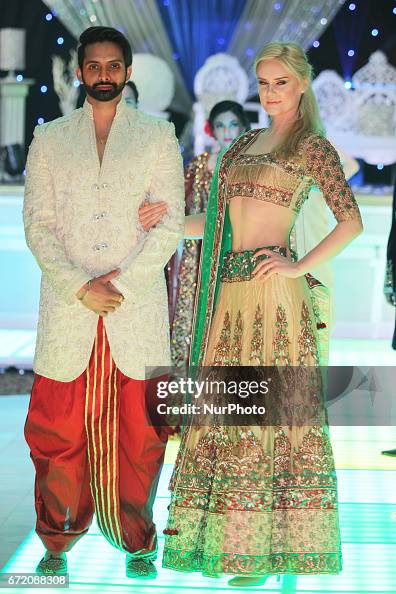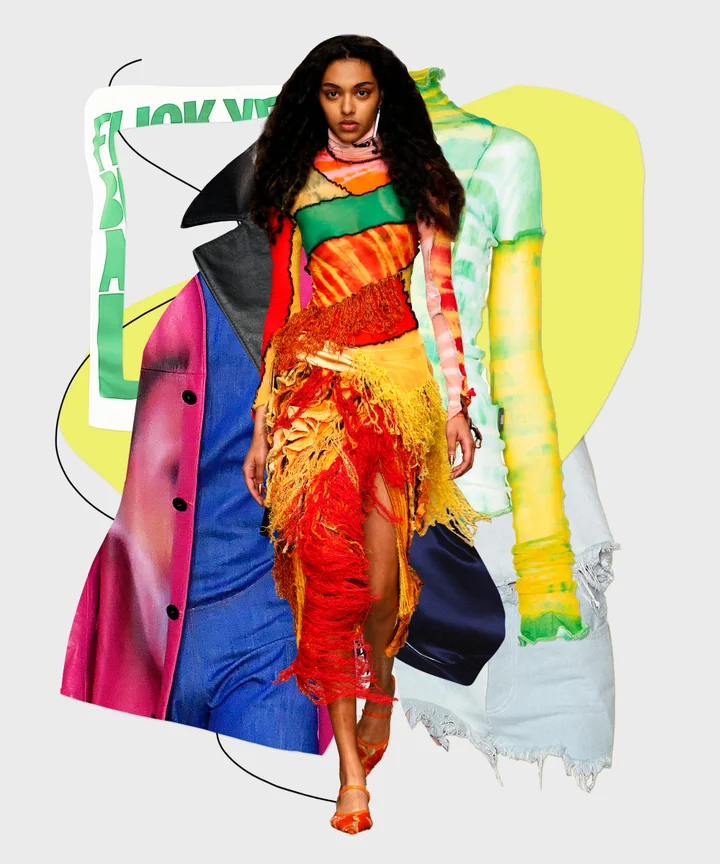Embrace the Elegance of Multiculturalism With Eastern Use
Checking out the elaborate world of Eastern put on opens a realm of social splendor and creative expression that transcends boundaries and time - eastern wear pakistan. From the lively shades of conventional Chinese qipaos to the regal beauty of Pakistani shalwar kameez, each garment encapsulates an one-of-a-kind narrative that speaks quantities about the heritage and customs of its beginnings. As we navigate via the tapestry of Eastern style, we discover hidden treasures of imagination and tradition that not just adorn our bodies yet likewise connect us to a much deeper sense of belonging and admiration for the diverse tapestry of global society
Beginnings of Eastern Use
Stemming from ancient human beings in Asia, Eastern wear incorporates a rich tapestry of practice and cultural relevance. The roots of Eastern wear can be traced back to numerous regions such as India, China, Japan, and the Center East, where clothing was not just a method of covering the body but additionally a reflection of social condition, profession, and faiths. In India, for instance, typical clothes like the saree for women and kurta-pajama for males have been put on for centuries and hold deep symbolic significances. In China, the cheongsam and qipao are renowned pieces that display the style and grace of Chinese society.
Eastern wear has actually advanced gradually, mixing historic customizeds with contemporary impacts to create a diverse variety of designs that accommodate different celebrations and preferences. From detailed needleworks to vibrant colors, each garment tells an unique story of its social origins, making Eastern wear an icon of heritage and identification that remains to mesmerize people worldwide.
Symbolism in Conventional Outfit
Conventional clothing in Eastern cultures lugs profound meaning that mirrors the worths, ideas, and heritage of varied neighborhoods. Each layout, garment, and shade aspect in Eastern traditional clothes holds substantial cultural significance.
In addition, conventional clothes is frequently used throughout unique celebrations and events to recognize traditions and display social satisfaction. The dynamic shades and comprehensive needlework on a Pakistani shalwar kameez used during weddings celebrate joy and celebration. Recognizing the importance behind Eastern typical attire not just includes depth to the clothes but also fosters recognition for the abundant cultural heritage and values embedded within these garments.
Influence of Eastern Style in the West
The combination of Eastern style components with Western styles has developed an exciting trend in the worldwide garment industry. Over the years, Eastern style impacts have actually made a considerable influence on Western style, with developers and fashion fanatics alike drawing inspiration from the abundant traditions of nations like India, Japan, and China.
One of the most noticeable impacts of Eastern fashion in the West can be seen in the appeal of conventional Oriental garments such as the saree, kimono, and qipao. These garments have been reimagined and adapted to suit Western preferences, causing trendy and distinct combination items that mix the very best of both globes.
Additionally, Eastern themes, embroidery techniques, and color palettes have likewise discovered their method into Western fashion collections, adding a touch of exoticism and elegance to modern layouts (eastern wear pakistan). The seamless integration of Eastern and Western style aspects not only showcases multiculturalism but likewise promotes imagination and innovation in the ever-evolving globe of fashion

Modern Interpretations of Eastern Styles
Exactly how have contemporary stylist reimagined and interpreted Eastern designs for a modern target market? In recent years, there has actually been a sites surge in modern-day interpretations of conventional Eastern garments that provide to the tastes of a globalized globe. Designers are mixing traditional Continue Eastern silhouettes, detailed needlework, and rich fabrics with modern cuts, ingenious fabrics, and strong colors to produce a blend of East-meets-West fashion.
One widespread pattern in contemporary analyses of Eastern styles is the consolidation of standard motifs and patterns right into Western garments items. This combination results in one-of-a-kind garments that celebrate the rich heritage of Eastern societies while interesting a more comprehensive target market. Additionally, designers are try out blending and matching various Eastern aspects, such as coupling a typical kurta with contemporary denim pants or layering a saree with a structured blazer.
Tips for Designing Eastern Apparel
When styling Eastern garments, consider including contemporary accessories to produce a diverse and well balanced appearance. Conventional Eastern garments, such as sarees, kurtas, and sherwanis, can be raised by adding contemporary aspects like declaration fashion jewelry, smooth bags, or trendy footwear. Mixing traditional Eastern outfit with contemporary pieces can result in a stylish and unique ensemble that showcases a fusion of societies.
An additional pointer for styling Eastern garments is to have fun with patterns and shades. Do not be scared to explore vibrant colors or detailed layouts to make a style declaration. Mixing and matching different patterns within the exact same outfit or pairing contrasting shades can include aesthetic passion and deepness to your appearance.
In addition, pay focus to the fit of the Eastern garments. Furthermore, don't hesitate to adorn with typical Eastern precious jewelry, such as jhumkas, bangles, or maang tikka, to complete your ensemble with a touch of authenticity and style.
Final Thought
Finally, Eastern use deals a distinct chance to value and honor the diverse societies and customs of Asia via fashion. By understanding the beginnings, symbolism, and affects of traditional clothing, individuals can accept the beauty of multiculturalism and integrate Eastern designs right into their wardrobe with regard and appreciation. With modern analyses and thoughtful designing, we can proceed to celebrate the rich heritage and craftsmanship of Eastern fashion in a purposeful means.
Each garment, design, and shade component in Eastern standard outfit holds substantial cultural significance. Recognizing the significance behind Eastern standard clothing not just adds depth to the clothes however additionally cultivates gratitude for the rich cultural heritage and worths installed more information within these garments.
